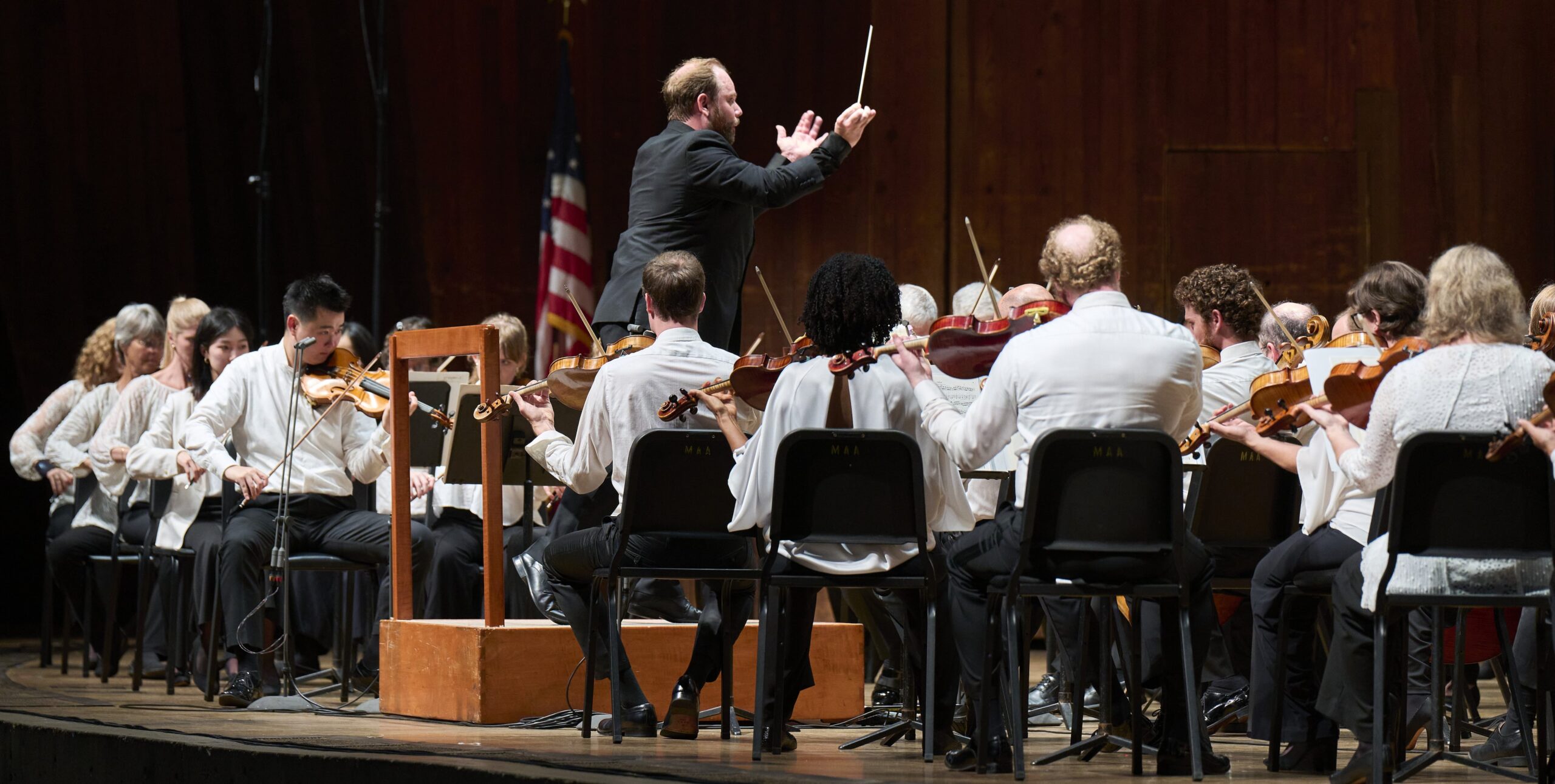Ohio’s Cuyahoa Falls At Blossom Music Center on Saturday, the Cleveland Orchestra presented a presentation that was as cozy and fulfilling as a summer evening beneath the trees, fusing music, the outdoors, and camaraderie.
The event featured the regional premieres of Gabriella Smith’s Rewilding, Max Bruch’s rarely heard Violin Concerto No. 2, and Edward Elgar’s well-known Enigma Variations, all conducted by Daniel Reith, who was making his last appearance as the ensemble’s associate conductor.
Blossom was commissioned to commemorate the 50th anniversary of Cuyahoga Valley National Park. Smith’s joyful ode to ecological restoration is titled Rewilding.
The piece revels in odd noises from the very beginning: percussionists clatter bicycle spokes with mallets, snap twigs in time, and swirl walnuts in mixing bowls. Smith has called her love of the rattling bicycles “pure joy,” and the percussionists certainly felt the same way, smiling despite their focus.
The musicians plunged themselves into the composer’s unusual orders to be sloppy, to squirm, and even to be a frog, all under Reith’s guidance. The violins created that last effect so successfully that it was possible to hear ribbits from the neighboring creeks. These actions are not ploys; rather, they are calls to embrace Smith’s belief that repairing harmed ecosystems may be both important and enjoyable.
The orchestra switched to drama from the Romantic era with equal skill. In Bruch’s Violin Concerto No. 2, which the group hadn’t played since Jascha Heifetz did so here in 1923, assistant concertmaster Stephen Tavani took the stage as the soloist.
With the ease of a light tenor, Tavani embraced the operatic sweep of the concerto, floating his phrases in the unique Adagio first movement. Reith provided the orchestra’s most open assistance and was a sympathetic partner. Tavani’s introduction of a horn-call theme in the center Recitativo quickly elicited an echoing echo from the orchestra’s horns, bringing to mind Bruch’s dramatic instincts, if not Smith’s amphibians from earlier in the evening.
Tavani’s quick passagework in the finale glistened, and Reith’s careful accompaniment allowed the soloist’s subtle reading to fully come through. At the conclusion, the audience and his fellow symphony members gave him warm smiles as a reward.
The program ended with Elgar’s Variations on an Original Theme, also referred to as the Enigma Variations. The composition, which was written between October 1898 and February 1899, immediately made Elgar famous around the world upon its London premiere.
Each version features a sketch of a member of the composer’s circle, ranging from his publisher and confidant, August Jaeger, to his wife, Alice. It is dedicated to my friends, who are depicted within. In the happy ending, Elgar himself makes an appearance as E.D.U., a moniker derived from his wife’s pet name for him, Eduard.
More than a century of conjecture has been fueled by the unsolved enigma of the title theme, which is whether it hides a hidden counter-melody or symbolic connection.
Reith gave the orchestra’s soloists—Wesley Collins’s tender viola in Ysobel, Mark Kosower’s deep cello in B.G.N., and Afendi Yusuf’s dreamy clarinet in Romanza—room-like clarity while bringing out the lighter character portraits of the lively Troyte and the whimsical Dorabella.
The last scene, which brought the piece and Reith’s tenure to a close, brought the brasses together for a powerful finish, while the heroic Nimrod unfolded with dignity.
The evening turned into a reflection on relationships and a heartfelt farewell to Reith, whose influence on the orchestra and its audiences will live on in the concert that connected Smith’s delight in nature, Bruch’s operatic zeal, and Elgar’s pictures of friendship.
Kevin McLaughlin writes and edits for a living. At the Jazz Band Ball, his monthly podcast about early jazz, is available on several podcast platforms.






